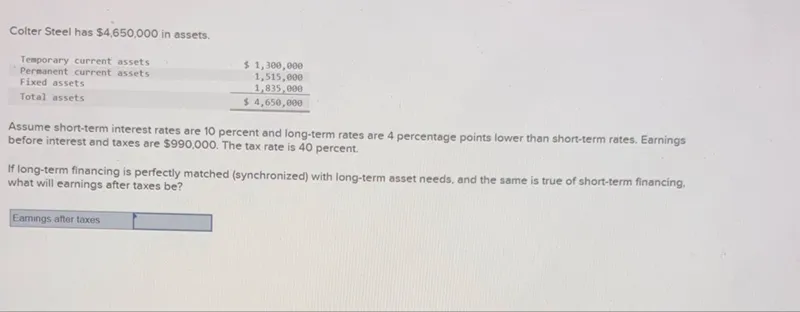Questions: Colter Steel has 4,650,000 in assets. Assume short-term interest rates are 10 percent and long-term rates are 4 percentage points lower than short-term rates. Earnings before interest and taxes are 990,000. The tax rate is 40 percent. If long-term financing is perfectly matched (synchronized) with long-term asset needs, and the same is true of short-term financing, what will earnings after taxes be?

Transcript text: Colter Steel has $\$ 4,650,000$ in assets.
Assume short-term interest rates are 10 percent and long-term rates are 4 percentage points lower than short-term rates. Earnings before interest and taxes are $\$ 990,000$. The tax rate is 40 percent.
If long-term financing is perfectly matched (synchronized) with long-term asset needs, and the same is true of short-term financing. what will earnings after taxes be?





